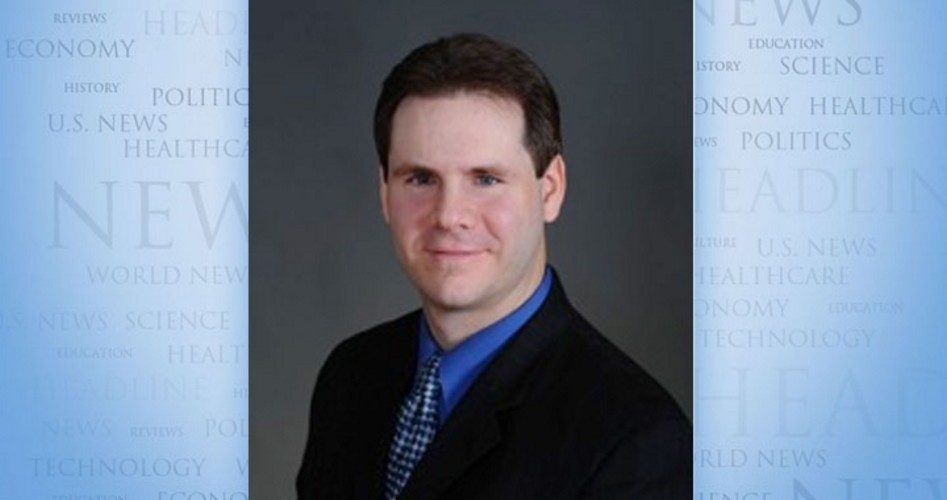
We may argue about what authors meant to say through works they’ve written, but we don’t argue about whether they meant what they meant. So it’s rather interesting that the men who put the First Amendment in the Constitution opened the inaugural Congress, in 1789, with Christian prayers. This tradition continued (and does to this day), with the prayers remaining exclusively Christian for as long as the Founding generation endured and beyond.
Oddly, it never occurred to these men who gave us the Establishment Clause that government involvement in religion could be a violation of it; we’d have to wait more than 150 years for that great revelation to be delivered by epiphanic, black-robed lawyers who, somehow, apparently knew more about the Constitution than the giants who actually wrote it. Funny that.
As for the Founders’ vision, question: Why didn’t they open one of the early congresses, or some other government affair in the nascent United States, with a prayer to King George III?
“Because he’s not only just a man, but the monarch against whom they rebelled!” is the answer. “That’s a silly question!”
Alright, but would showing such reverence to America’s then-mortal enemy have been any sillier than insisting that a representation of God’s enemy, Satan, must accompany a Nativity at a state capitol at Christmastime?
Is it any sillier than saying the reasoning justifying the above — not providing satanism equal time is somehow an Establishment Clause violation — further means that public-sphere Christmastime displays must also include a “Festivus” pole and a “Church of The Flying Spaghetti Monster” display?
Such displays have, and do, appear(ed) during Christianity’s second-highest Holy Day season. A recent example is that the baby Baphomet, a goat-like creature worshiped by satanists, has been placed alongside a Christmas tree, a Nativity, and a menorah in the Springfield, Illinois State Capitol Rotunda.
Now, these displays’ creators often are clear about their motivation: to mock faith. Festivus is a fictional holiday from the sitcom Seinfeld “that satirizes the commercialism of Christmas,” Fox News informed in 2015, while the Church of The Flying Spaghetti Monster “mocks beliefs that a god created the universe and argues instead that the universe was created by a plate of pasta and meatballs,” the site continued.
But here’s the point: Just as some atheists today love striking a blow against faith, there were early American royalists who might’ve reveled in mocking our early republic by having a prayer said to King George. And, certainly, pretend worship of a king (something analogous, emperor worship, was demanded in certain times and places) is no more ridiculous than a Church of The Flying Spaghetti Monster. So what’s the difference?
Here’s one: Even if some colonial royalist had enough chutzpah and irreverence to launch such an effort, he would’ve been laughed out of court (and run out of town). Aside from having no desire to undermine our formative faith, the Founders understood the Constitution and would’ve recognized as ridiculous the argument justifying our Holy Day trespasses. To wit:
Providing a public forum for one “belief system” but not others is a First Amendment violation.
Of course, this means we could conceivably end up showcasing thousands of “religious” displays, as you can have a new “religion” today as easily as a new “gender identity.”
As a sign at the Illinois Capitol puts it, the “State of Illinois is required by the First Amendment of the United States Constitution to allow temporary, public display in the state capitol so long as these displays are not paid for by taxpayer dollars.” Of course, judges have certainly thus ruled. The “First Amendment,” however, requires no such thing.
To analogize this, the First Amendment protects freedom of speech along with that of religion. So if a state-funded, faith-oriented display on public property would violate freedom of religion — the implication here — wouldn’t state-funded, speech-oriented displays violate freedom of speech?
Yet we do have state-funded, speech-oriented displays, such as at the Lincoln Memorial, where the 16th president’s Gettysburg and Second Inaugural addresses are inscribed. The former includes the words that our nation was “conceived in Liberty, and dedicated to the proposition that all men are created equal.”
Now, question: Should it be required that such speech’s display be privately funded, lest the government be guilty of “infringing upon speech”?
Moreover, should the same “anti-infringement” imperative also mean that contrary opinions must be displayed alongside Lincoln’s words? How about the 1619 Project proposition that our nation was not conceived in liberty but in slavery? How about Nazi (or today’s leftist “equity”) sentiments about how not all men are created equal?
Silly? Perhaps. But equating government display of speech with its infringement upon speech is no sillier than equating government display of religion with the infringement upon exercise of religion. Public-property Christian displays don’t force a person to attend church any more than public-property equality-dogma displays compel him to espouse equality.
The mistake made here is simple and common, and this holds whether some publicly displayed speech or religion is government- or privately-funded: We have a right to the freedom of speech and religion.
We do not have a right to the equal government or public-square showcasing of our speech or religion.
As for “establishment,” the Founders rebelled against an empire that had a church established by the central government and whose dictates you couldn’t oppose without peril. Nothing other than this Big Brother imposition of religion constitutes “establishment.”
People who through their elected representatives decide to have specific religious symbols on their communally owned (public) property aren’t violating the Constitution. Those thus guilty are judges who, imposing their own dark spirit, distort “establishment” to Flying Spaghetti Monster proportions.
A video about the Illinois outrage is below.


